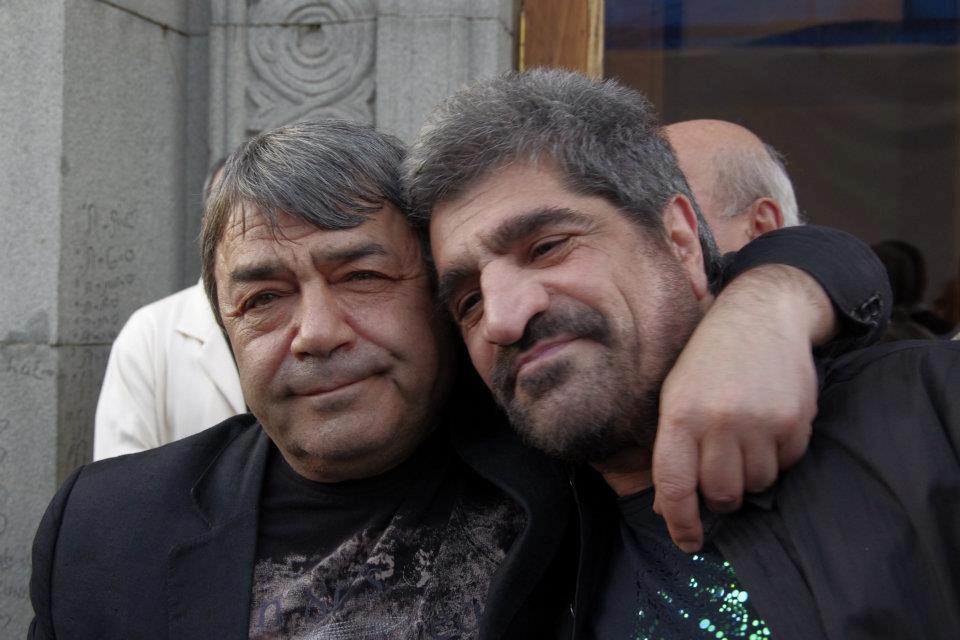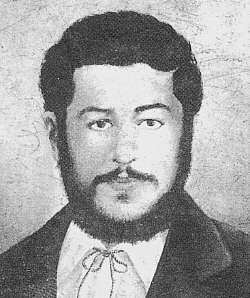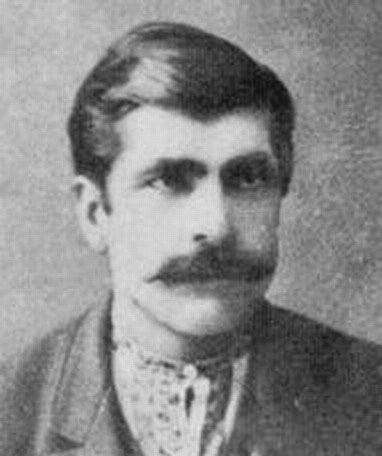|
Armenian Revolutionary Songs
Armenian revolutionary songs ( hy, Հայ յեղափոխական երգեր, ''Hay heghapokhagan yerker'') are songs that promote Armenian patriotism. The origins of these songs lay largely in the late nineteenth and early twentieth centuries, when Armenian political parties were established to struggle for the political and civil rights of Armenians living in the Ottoman Empire. History The Armenian revolutionary movement, initially led by the Social Democrat Hunchakian Party (est. 1887) and the Armenian Revolutionary Federation (est. 1890), took place in the late nineteenth and early twentieth centuries. This was caused by years of oppression from the Ottoman Empire, especially under the rule of sultan Abdul Hamid II. This was the period when Armenians began demanding their most basic rights and defending Armenian towns from Ottoman oppression. Certain armed Armenian patriotic groups formed to fight the Turkish oppression and defend Armenian towns from Kurdish brigands. These vol ... [...More Info...] [...Related Items...] OR: [Wikipedia] [Google] [Baidu] |
Armenia
Armenia (), , group=pron officially the Republic of Armenia,, is a landlocked country in the Armenian Highlands of Western Asia.The UNbr>classification of world regions places Armenia in Western Asia; the CIA World Factbook , , and ''Oxford Reference Online'' also place Armenia in Asia. It is a part of the Caucasus region; and is bordered by Turkey to the west, Georgia to the north, the Lachin corridor (under a Russian peacekeeping force) and Azerbaijan to the east, and Iran and the Azerbaijani exclave of Nakhchivan to the south. Yerevan is the capital, largest city and the financial center. Armenia is a unitary, multi-party, democratic nation-state with an ancient cultural heritage. The first Armenian state of Urartu was established in 860 BC, and by the 6th century BC it was replaced by the Satrapy of Armenia. The Kingdom of Armenia reached its height under Tigranes the Great in the 1st century BC and in the year 301 became the first state in the world to adopt ... [...More Info...] [...Related Items...] OR: [Wikipedia] [Google] [Baidu] |
Harout Pamboukjian
Harout Pamboukjian ( hy, Հարութ Փամբուկչյան; hyw, Յարութ Փամպուքճեան; born July 1, 1950), known as Dzakh Harut ( hy, Ձախ Հարութ, literally "Left Harout"), is an Armenian pop singer living in Los Angeles. His Armenian dance, folk, and revolutionary and romantic songs make him a favorite among Armenians worldwide. Early life Harout Pamboukjian was born on July 1, 1950, in Yerevan, Armenia (then part of the Soviet Union). In his early teens, he took lessons in many musical instruments including the guitar, the bouzouki and saz (stringed instruments), the dhol (drums) and the piano, later forming a band called Erebouni. His interest in music was initially influenced by his mother Tsaghik Shahakyan, who was also a singer. Erebouni went from village to village playing everything from Charles Aznavour to Deep Purple and Elvis, at weddings and universities. Due to restrictions under the Soviet Union, Harout and most of his family left Sovi ... [...More Info...] [...Related Items...] OR: [Wikipedia] [Google] [Baidu] |
Armenian National Awakening In The Ottoman Empire
The Armenian national awakening resembles that of other non-Turkish ethnic groups during the rise of nationalism under the Ottoman Empire in development of ideas of nationalism, salvation and independence in Armenia, as the Ottoman Empire tried to cover the social needs by creating the Tanzimat era, the development of Ottomanism and First Constitutional Era. However, the coexistence of the communities (including Armenians) under Ottomanism proved to be a dysfunctional solution as did the Second Constitutional Era which also ignited the dissolution of the Ottoman Empire. During the Armenian national awakening, "Armenian National Assembly" took over some of the regulations of temporal matters of the Ottoman Armenian Community from the Armenian Patriarchate. Among the Armenian elite, the idea of republicanism replaced the absolute monarchy of the Ottoman Dynasty, and establishment of the Armenian National Assembly in 1863 replaced the membership of the millet system. While it took ... [...More Info...] [...Related Items...] OR: [Wikipedia] [Google] [Baidu] |
Raphael Patkanian
Raphael Patkanian ( hy, Ռափայել Պատկանյան, also known as Kamar Katiba; 20 November 1830 – 3 September 1892) was one of the most popular Armenian poets.The Survey - Page 259 by Survey Associates Biography Patkanian was born in Nor Nakhichevan, Russia in 1830. His father and grandfather had been known for their poetic gifts. While at the University of Moscow, he created a literary club for his Armenian students, and from initials of their names formed his own pen-name of Kamar Katiba. Many of his poems were written during the Turco-Russian war, when the Russian Armenians had high hopes for the deliverance of Turkish Armenia from Ottoman rule. Patkanian died in 1892, after forty-two years of his continuous activity, as a teacher, author, and editor. His hopes and ambitions can be seen in his works especially in the poem "Araqs" named after the river Araks , az, Araz, fa, ارس, tr, Aras The Aras (also known as the Araks, Arax, Araxes, or Araz) is a river ... [...More Info...] [...Related Items...] OR: [Wikipedia] [Google] [Baidu] |
1896 Ottoman Bank Takeover
The occupation of the Ottoman Bank ( tr, Osmanlı Bankası Baskını, "Raid on the Ottoman Bank"; hy, Պանք Օթօմանի գրաւումը, ''Bank Otomani k'ravumĕ'' "Ottoman Bank takeover") by members of the Armenian Revolutionary Federation (Dashnak Party) took place in Istanbul, the capital of the Ottoman Empire, on 26 August 1896. In an effort to raise further awareness and action by the major European powers, 28 armed men and women led primarily by Papken Siuni and Armen Garo took over the bank which largely employed European personnel from Great Britain and France. Stirred largely due to the inaction of the European powers in regard to Hamidian massacres started by Sultan Abdul Hamid II. The Armenian Revolutionary Federation members saw its seizure as their best attempt to bring full attention to their plight. The Ottoman Bank, at the time, served as an important financial center for both the Empire and the countries of Europe. Armed with pistols, grenades, dynamite ... [...More Info...] [...Related Items...] OR: [Wikipedia] [Google] [Baidu] |
Zartir Lao
"Zartir lao" ( hy, Զարթի՛ր, լաօ) is a popular Armenian revolutionary folk song. Composed in the 1890s, it praises the prominent '' fedayi'' leader Arabo and is a wake up call for struggle against the Turks. Origin The song was originally written by Fahrat, an Armenian ashugh from Mush. The song's hero is Arabo, the famed '' fedayi'', who is now presented as a symbol of the Armenian liberation movement. He mainly operated in Mush Plain and Sasun. In 1893, while returning from Caucasus, his group was surrounded in a gorge near Bulanikh. Everyone in his group was killed, including Arabo himself. Over time its connection to Arabo's death was forgotten. This was traced in the evolution of the song's title: "Arabo's song" («Արաբոյի երգ»), "Brave Arabo's song" («Քաջ Արաբոյի երգ»), "Mshetsi's song" («Մշեցու երգ»), "Zartir lao" («Զարթիր լաօ»), etc. Composition The song is stylistically similar to other traditional Armenian lul ... [...More Info...] [...Related Items...] OR: [Wikipedia] [Google] [Baidu] |
National Anthem Of Armenia
"" ( hy, Մեր Հայրենիք}, ; "Our Fatherland") is the national anthem of Armenia. It was arranged by Barsegh Kanachyan; the lyrics were written by Mikayel Nalbandian. First adopted in 1918 as the anthem of the short-lived First Republic of Armenia, it was subsequently banned after the country was invaded by then incorporated into the Soviet Union. Following the dissolution of the Soviet Union and the restoration of sovereignty in 1991, the song was re-adopted as the national anthem, albeit with slightly modified lyrics. History Composition and first republic (until 1920) The lyrics of "" were derived from "The Song of an Italian Girl", a poem written by Mikael Nalbandian in 1861. ( hy, Իտալացի աղջկա երգը, translit=Italats’i aghjka yergy), It is more well known by its incipit, "" ("Our Fatherland"). In the early 20th century, the music was composed by Barsegh Kanachyan. Subsequently, both the lyrics and music were adopted as the national anthem of th ... [...More Info...] [...Related Items...] OR: [Wikipedia] [Google] [Baidu] |
Soghomon Tehlirian
Soghomon Tehlirian ( hy, Սողոմոն Թեհլիրեան; April 2, 1896 – May 23, 1960) was an Armenian revolutionary and soldier who assassinated Talaat Pasha, the former Grand Vizier of the Ottoman Empire, in Berlin on March 15, 1921. He was entrusted to carry out the assassination after having earlier killed Harutian Mgrditichian, who had worked for the Ottoman secret police and helped compile the list of Armenian intellectuals who were deported on April 24, 1915. Talaat's assassination was a part of Operation Nemesis, a revenge plan by the Armenian Revolutionary Federation against members of the Ottoman Imperial Government responsible for the Armenian genocide during World War I. Talaat Pasha had been convicted and sentenced to death ''in absentia'' in the Turkish courts-martial of 1919–20, and was viewed as the main orchestrator of the genocide. After a two-day trial Tehlirian was found not guilty by a German court, and freed. Tehlirian is considered a nation ... [...More Info...] [...Related Items...] OR: [Wikipedia] [Google] [Baidu] |
Armenian Genocide
The Armenian genocide was the systematic destruction of the Armenians in the Ottoman Empire, Armenian people and identity in the Ottoman Empire during World War I. Spearheaded by the ruling Committee of Union and Progress (CUP), it was implemented primarily through the mass murder of around one million Armenians during death marches to the Syrian Desert and the Forced conversion, forced Islamization of Armenian women and children. Before World War I, Armenians occupied a protected, but subordinate, place in Ottoman society. Large-scale massacres of Armenians occurred Hamidian massacres, in the 1890s and Adana massacre, 1909. The Ottoman Empire suffered a series of military defeats and territorial losses—especially the 1912–1913 Balkan Wars—leading to fear among CUP leaders that the Armenians, whose homeland in the eastern provinces was viewed as the heartland of the Turkish nation, would seek independence. During their invasion of Caucasus campaign, Russian and Per ... [...More Info...] [...Related Items...] OR: [Wikipedia] [Google] [Baidu] |
Assassination Of Talaat Pasha
On 15 March 1921, Armenian student Soghomon Tehlirian assassinated Talaat Pasha—former grand vizier of the Ottoman Empire and the main architect of the Armenian genocide—in Berlin. At his trial, Tehlirian argued, "I have killed a man, but I am not a murderer"; the jury acquitted him. Tehlirian came from Erzindjan in the Ottoman Empire but moved to Serbia before the war. He served in the Armenian volunteer units of the Russian army and lost most of his family in the genocide. Deciding to take revenge, he assassinated Harutian Mgrditichian, who helped the Ottoman secret police, in Constantinople. Tehlirian joined Operation Nemesis, a clandestine program carried out by the Dashnaktsutyun (the Armenian Revolutionary Federation); he was chosen for the mission to assassinate Talaat due to his previous success. Talaat had already been convicted and sentenced to death by an Ottoman court-martial, but was living in Berlin with the permission of the Government of Germany. Many prom ... [...More Info...] [...Related Items...] OR: [Wikipedia] [Google] [Baidu] |
Battle Of Holy Apostles Monastery
A battle is an occurrence of combat in warfare between opposing military units of any number or size. A war usually consists of multiple battles. In general, a battle is a military engagement that is well defined in duration, area, and force commitment. An engagement with only limited commitment between the forces and without decisive results is sometimes called a skirmish. The word "battle" can also be used infrequently to refer to an entire operational campaign, although this usage greatly diverges from its conventional or customary meaning. Generally, the word "battle" is used for such campaigns if referring to a protracted combat encounter in which either one or both of the combatants had the same methods, resources, and strategic objectives throughout the encounter. Some prominent examples of this would be the Battle of the Atlantic, Battle of Britain, and Battle of Stalingrad, all in World War II. Wars and military campaigns are guided by military strategy, whereas bat ... [...More Info...] [...Related Items...] OR: [Wikipedia] [Google] [Baidu] |







